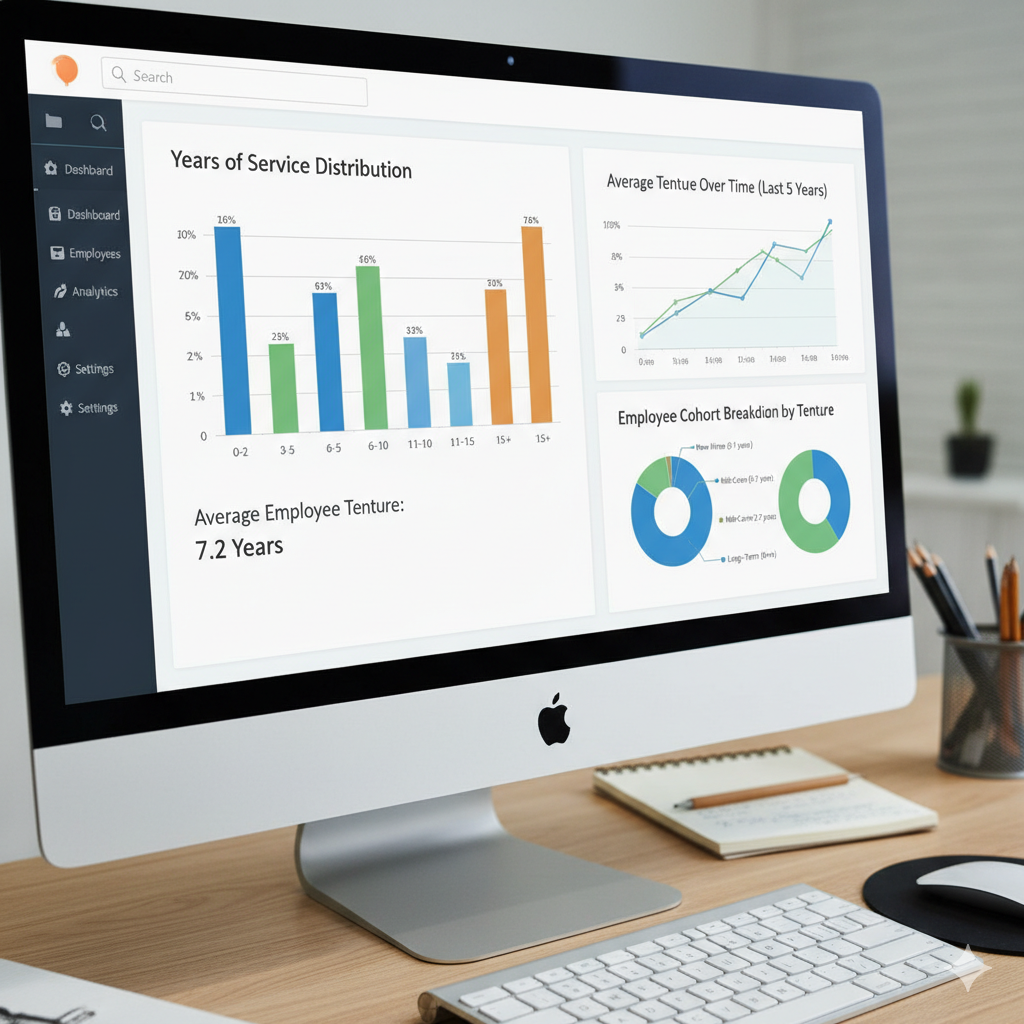Address
Kaypian, San Jose Del Monte City, Bulacan Philippines
Work Hours
Monday to Friday: 8AM - 6PM
Weekend: 10AM - 5PM
Address
Kaypian, San Jose Del Monte City, Bulacan Philippines
Work Hours
Monday to Friday: 8AM - 6PM
Weekend: 10AM - 5PM


Integrated HR. Accurate Payroll.


Integrated HR. Accurate Payroll.

Employee tenure — or years of service — is more than just a number. It reflects loyalty, experience, and organizational health. Companies that understand their workforce’s tenure distribution can make smarter decisions about training, promotions, and retention strategies.
With the help of HRIS analytic graphs, HR teams can now visualize tenure data in real time. These visual tools transform raw employee records into actionable insights, helping organizations celebrate loyalty, predict turnover risks, and plan future workforce needs more effectively.
Employee tenure provides valuable insight into an organization’s stability and employee engagement. Tracking years of service helps HR professionals:
👥 Understand workforce composition — see how many employees fall into short-, mid-, or long-tenure brackets.
🔁 Predict turnover trends — shorter tenures may indicate retention challenges.
📈 Plan succession and development — identify experienced employees ready for leadership roles.
💰 Optimize costs — long-tenured employees often reduce hiring and training expenses.
🎉 Celebrate milestones — use data to acknowledge service anniversaries and boost morale.
Monitoring tenure trends ensures that HR strategies are data-backed, not just intuitive.
An HRIS (Human Resource Information System) consolidates employee data — including start dates, job changes, and status updates — into one secure platform. When combined with analytic graphs, it provides a visual breakdown of your workforce’s tenure distribution.
Here’s how:
| Graph Type | Purpose |
| Bar Chart | Compare tenure distribution across departments or teams. |
| Pie Chart | Show the proportion of employees within different tenure brackets. |
| Line Graph | Track average tenure growth or turnover trends over time. |
| Stacked Column Chart | Visualize combined data, such as tenure by job role or location. |
| Heat Map | Highlight areas or departments with high or low tenure averages. |
These visuals make it easier for HR leaders to turn complex tenure data into clear, meaningful stories about the organization’s workforce.
To get the most value from tenure tracking, HR teams should:
Tenure analytics isn’t just about numbers — it’s about understanding people.
By visualizing employee years of service, HR leaders can:
When HR data is transformed into visual, actionable insights, employee retention becomes a strategic advantage — not just a goal.
Tracking employee tenure with HRIS analytic graphs helps organizations gain a deeper understanding of their workforce dynamics. It reveals who’s staying, who’s leaving, and how tenure impacts overall productivity and culture.
By visualizing years of service data, HR teams can develop smarter retention programs, enhance workforce planning, and celebrate the loyalty that drives organizational success.
In today’s data-driven workplace, tenure analytics isn’t just useful — it’s essential for building a sustainable, engaged, and future-ready workforce.